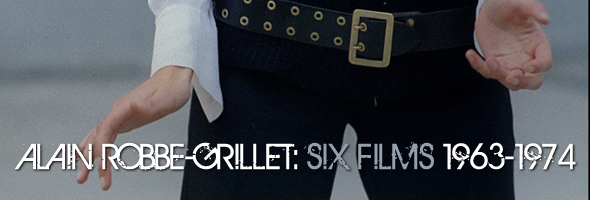
THE IMMORTAL ONE (L'immortelle)
B&W, 1962, 101m.
Starring Françoise Brion, Jacques Doniol-Valcroze, Guido Celano
TRANS-EUROP-EXPRESS
B&W, 1966, 94m.
Directed by Alain Robbe-Grillet
Starring Jean-Louis Trintignant, Marie-France Pisier, Nadine Verdier, Christian Barbier, Charles Millot, Catherine Robbe-Grillet, Paul Louyet
THE MAN WHO LIES (L'homme qui ment)
B&W, 1968, 97m.
Starring Jean-Louis Trintignant, Ivan Mistrik, Zuzana Kocúriková, Sylvie Turbová
EDEN AND AFTER (L'Eden et après)
Color, 1970, 98m.
Starring Catherine Jourdan, Lorraine Rainer, Sylvain Corthay, Richard Leduc, Pierre ZimmerN. THROWS THE DICE (N. a pris les dés...)
Color, 1970, 79m.
Starring Catherine Jourdan, Lorraine Rainer, Sylvain Corthay, Richard Leduc, Pierre Zimmer SLOW SLIDINGS OF PLEASURE
(Glissements progressifs du plaisir)
Color, 1974,
106m.
Starring
Anicée Alvina, Olga Georges, Jean-Louis Trintignant, Michael Lonsdale, Jean Martin, Marianne Eggerickx, Claude Marcault, Isabelle Huppert
Directed by Alain Robbe-Grillet
BFI (Blu-ray & DVD) (UK RB/R2 HD/PAL), Kino / Redemption (Blu-ray & DVD) (US RA/R1 HD/NTSC), Sony (DVD) (France R2 PAL) / 1.66:1 (16:9) and 1.33:1
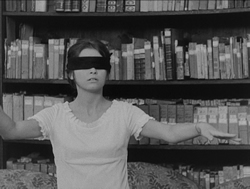
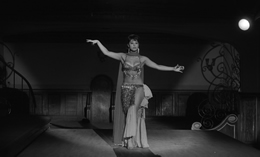 Alain Robbe-Grillet, who made an international splash with his mind-twisting screenplay for the Alain Resnais film Last Year at Marienbad. Playful, sexual, and cerebral, his narratives combine lurid pulp and heady mind games into challenging but highly enjoyable entertainments. He retained ownership of his first six films and refused to allow them to be released on home video, citing the visual inadequacies of VHS as a bastardized representation of the cinematic experience. Therefore fans unable to attend the very few retrospectives of his work in theaters had to resort to muddy bootlegs off of occasional TV broadcasts, with the films' reputations flourished more through critical studies than actual viewings (not to mention a tantalizing section in the essential Immoral Tales) .
Alain Robbe-Grillet, who made an international splash with his mind-twisting screenplay for the Alain Resnais film Last Year at Marienbad. Playful, sexual, and cerebral, his narratives combine lurid pulp and heady mind games into challenging but highly enjoyable entertainments. He retained ownership of his first six films and refused to allow them to be released on home video, citing the visual inadequacies of VHS as a bastardized representation of the cinematic experience. Therefore fans unable to attend the very few retrospectives of his work in theaters had to resort to muddy bootlegs off of occasional TV broadcasts, with the films' reputations flourished more through critical studies than actual viewings (not to mention a tantalizing section in the essential Immoral Tales) . 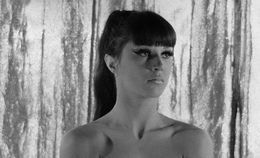 of actual names, referring to them instead by letters of the alphabet. To obtain financing, the film was shot in Istanbul, giving it a distinctly different feel from other French films of the time. Significantly, he would often
of actual names, referring to them instead by letters of the alphabet. To obtain financing, the film was shot in Istanbul, giving it a distinctly different feel from other French films of the time. Significantly, he would often 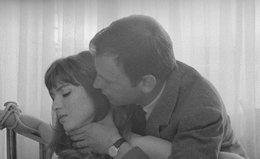 shoot his subsequent features in other countries which accounts for their feeling a bit out of step with other French productions of the period. Not surprisingly, there's little traditional structure here as N. (Donoil-Valcroze), a professor traveling abroad, becomes infatuated with a mysterious woman, L. (Brion), whom no one else seems to know (or even remember seeing). When tragedy strikes, the events of the film fragment into a string of possible cause and effect scenarios.
shoot his subsequent features in other countries which accounts for their feeling a bit out of step with other French productions of the period. Not surprisingly, there's little traditional structure here as N. (Donoil-Valcroze), a professor traveling abroad, becomes infatuated with a mysterious woman, L. (Brion), whom no one else seems to know (or even remember seeing). When tragedy strikes, the events of the film fragment into a string of possible cause and effect scenarios. 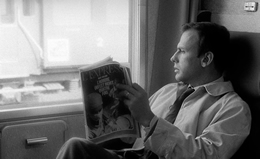 Trintignant the actor.
Trintignant the actor. 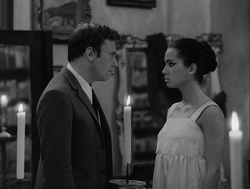 The Image.
The Image. 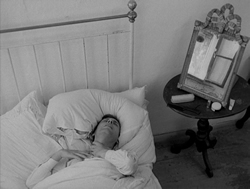 sister, maid, and elderly father, with the first three becoming possible conquests for this lying Don Juan as he regales them with stories of his false past with Jean, whom he also claims to be on occasion. However, fate has more than a couple of surprises in store... or does it? Here Robbe-Grillet dispenses with any pretense of a "satisfying" traditional narrative, instead toying with his story by flipping it around over and over. The setting is also extremely effective, feeling at times like a gothic '60s horror film while also injecting elements of other genres like war thrillers and drawing room mysteries, all anchored by another excellent Trintignant performance.
sister, maid, and elderly father, with the first three becoming possible conquests for this lying Don Juan as he regales them with stories of his false past with Jean, whom he also claims to be on occasion. However, fate has more than a couple of surprises in store... or does it? Here Robbe-Grillet dispenses with any pretense of a "satisfying" traditional narrative, instead toying with his story by flipping it around over and over. The setting is also extremely effective, feeling at times like a gothic '60s horror film while also injecting elements of other genres like war thrillers and drawing room mysteries, all anchored by another excellent Trintignant performance.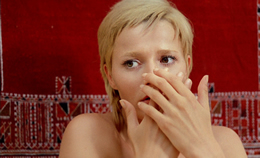 demonstrates the ability to heal bloody wounds and induces them to try a "fear powder" guaranteed to expand their consciousness. From there the film largely unfolds through the eyes of Violette (Jourdan), a short-haired blonde who traverses Tunisia in a series of hallucinatory encounters with her friends undertaking different roles from one location to the next.
demonstrates the ability to heal bloody wounds and induces them to try a "fear powder" guaranteed to expand their consciousness. From there the film largely unfolds through the eyes of Violette (Jourdan), a short-haired blonde who traverses Tunisia in a series of hallucinatory encounters with her friends undertaking different roles from one location to the next. 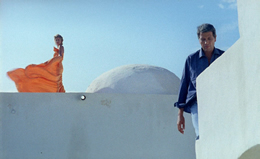 literal fantasy object here but she imbues the role with more fragility than usual for these films.
literal fantasy object here but she imbues the role with more fragility than usual for these films.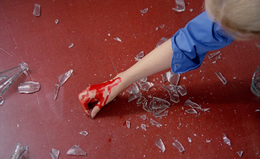 culture with the combination of editing and alternate takes resulting in an entirely different beast.
culture with the combination of editing and alternate takes resulting in an entirely different beast.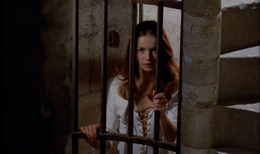
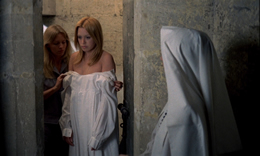 particularly flourished from the 1960s through the 1970s. For the record, Robbe-Grillet made a handful of films after this but didn't retain ownership; in addition to Playing with Fire, these include La belle captive (the high point of his later cinematic career), The Blue Villa, and Gradiva. Watching these six in succession it becomes clearer how repeated visual and aural motifs, not to mention character names, become significant from one film to the next, such as the name Boris, the recurring use of blindfolds both in and out of a sexual context, and the image and sound of bursting glass as a narrative disruption. Of course, it's also easier to absorb this approach now since other filmmakers have run with the same idea, particularly Krzysztof Kieślowski, Peter Greenaway, and Jess Franco.
particularly flourished from the 1960s through the 1970s. For the record, Robbe-Grillet made a handful of films after this but didn't retain ownership; in addition to Playing with Fire, these include La belle captive (the high point of his later cinematic career), The Blue Villa, and Gradiva. Watching these six in succession it becomes clearer how repeated visual and aural motifs, not to mention character names, become significant from one film to the next, such as the name Boris, the recurring use of blindfolds both in and out of a sexual context, and the image and sound of bursting glass as a narrative disruption. Of course, it's also easier to absorb this approach now since other filmmakers have run with the same idea, particularly Krzysztof Kieślowski, Peter Greenaway, and Jess Franco. 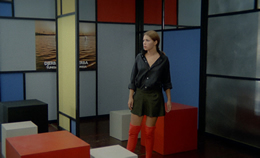
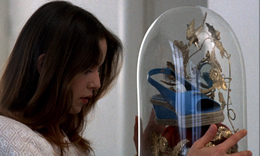 The Man Who Lies and Eden and After.
The Man Who Lies and Eden and After.